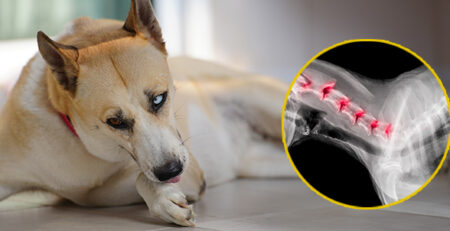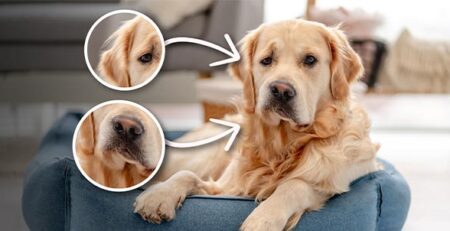Does your dog or cat have a half-closed eye, narrowed pupil, and visible third eyelid? He may suffer from Horner’s syndrome. Recognize it before it becomes dangerously aggravated.
Horner’s syndrome develops symptoms in dogs and cats that are confused with those of eye disease but is actually a neurological disorder.
It occurs as a result of damage or malfunction of a specific group of nerves called the “
sympathetic trunk
“.
Like the human nervous system, the cat and dog nervous system is also divided into peripheral and central
The central one includes the brain and spinal cord, located within the spine, and is responsible for transmitting impulses from the brain to nerves in the rest of the body.
This network of nerves forms the peripheral nervous system and functions as a network of electrical wires along which impulses travel and reach all parts of the animal’s body.
The long and complex weave reaches the pupil of the eye where, in addition to innervating the pupil, it determines the tone of the periorbital and eyelid muscles, allowing them to function properly.
The syndrome is the result of a breakdown in communication between the brain and the innervation of the eyes to which impulses no longer reach.
Symptoms of Horner’s syndrome
Usually the syndrome affects only one side of the face and one eye and, although rarely, can also be bilateral.
The animal’s face becomes asymmetrical, and the affected eye is more sunken (enophthalmos) and reddened (conjunctival hyperamia).
Also:
- the pupil shrinks (persistent miosis)
- there is a drooping of the upper or lower eyelid (eyelid ptosis)
- Out comes the nictitating membrane, which will be enlarged (prolapse)
- a conjunctival discharge is present
This condition is not to be underestimated: while not particularly serious, its causes, namely the underlying diseases that caused it, may be.
The causes that cause Horner’s syndrome in dogs and cats
Among the most frequent we find:
- Spinal impacts, spinal misalignment, or other forms of damage that impair nerve pathways
- Trauma to the neck, chest or eye (a bite or collision against a hard surface)
- Otitis media and internal otitis or even improperly performed ear cleaning that can damage the structure of the inner ear and its nerve pathways
- intervertebral disc disease
- Tumors, diseases and other conditions affecting the eyes or the area of the skull behind the eyes
- facial muscular atrophy
- facial nerve palsy
- tetanus
- myelitis
- inflammation of the trigeminal nerve
- diabetes mellitus
- hypothyroidism
If Horner’s syndrome does not occur as a result of any of these conditions, it is termed idiopathic.
The idiopathic form tends to resolve spontaneously in about 15 weeks.
The most predisposed breeds are the Labrador Retriever, Golden Retriever, Border Collie and English Setter but in principle, no dog or cat is excluded.
Diagnosis and treatment of Horner’s syndrome
Only through a careful and thorough examination (most often with the support of a neurologist) and specific tests will your Veterinarian be able to distinguish the syndrome from other conditions.
Subjecting the animal:
- To an MRI if he suspects cervico-thoracic intracranial or cervical spinal cord neurologic injury
- To a CT scan when he instead has a suspicion of a primary pathology that has damaged the sympathetic nervous system
and by understanding the cause, your Veterinarian will prescribe the appropriate therapy and cured the underlying disease, Horner’s syndrome will eventually regress as well.
Acting quickly will help prevent the situation from worsening and help your four-legged friend recover in a short time.
When you notice changes in your dog’s face, especially in his eyes, consult us immediately.
In this regard, remember that our Staff Veterinary Doctors are always at your disposal and that Clinica La Veterinaria is open daily h24 including holidays and with Emergency Service from 8 pm to 8 am.
For the joy of seeing them HAPPY











